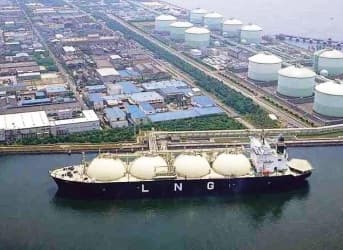Part 1 can be found here
So last week’s summary of the current status of LNG exports was ignited by my interest in this LNG study by ICF International, which was commissioned by the API. The report in itself is rather extensive (in a 156 pages kind-of-way), but for those folk less nerdy than myself (count your blessings), I have identified some of the key themes. So here are my top takeaways:
–BENEFITS TO INTERNATIONAL BUYERS: The report outlines why the US is such an attractive source for LNG: 1) it provides geographical diversification, from 2) a politically stable supply source at that, while 3) providing access to Henry Hub pricing (to achieve lower / more stable LNG costs) to 4) increase competition and lower prices further in the long-term, while 5) giving an opportunity for foreign investors to invest in upstream / midstream / liquefaction facilities involved.
–GLOBAL IMPACT: The introduction of US LNG exports could lower delivered prices on a global scale by $1 to $3 / MMbtu, dependent upon global demand.
–PRICE IMPACT: The average price increase is presented in three export scenarios, and illustrated in the below graphic as base case (4 Bcf/d), middle case (8 Bcf/d), and high case (16 Bcf/d) by 2035. Given all of this, the high exports case is still only expected to add $1.02/ MMbtu to the wholesale natural gas price, which equates to an approximate change of 4.5% to the average retail electricity price. Given current indications, the middle exports case seems the most likely scenario.

–EMPLOYMENT IMPACT: LNG exports lead to an increase in manufacturing jobs, prompted by increased demand for equipment and materials needed in natural gas production. Significant growth also occurs within the tools and machinery manufacturing sectors, while the iron and steel manufacturing sectors also see growth. The total employment impact based on the middle exports scenario by 2035 is job creation of just over 300,000 jobs.
Related article: Canadian Company Strikes Deal for LNG Exports to Europe
–GDP IMPACT: This will mostly be seen in the form of Government revenues, through federal, state, and local taxes, as well as GDP gains associated with additional economic activity. Based on the middle exports case, this would be approximately $20 billion per annum by 2035.

–LNG GLOBAL SUPPLY / DEMAND TRENDS: A quick summary of world LNG trade sees that it has grown from 17 Bcf/d in 2004 to 32 Bcf/d in 2011. Exports from Qatar have grown the most, from 2.3 Bcf/d to 9.9 Bcf/d. Looking ahead, additional growth in LNG trade is projected to be around 32 Bcf/d to 2025 (basically doubling), increasing to an additional 45 Bcf/d by 2035. 39% of demand growth is expected to come from Asia, with Europe making up nearly a quarter.

World LNG demand growth projections by 2035
Related article: Free Market LNG: the Next “Endless Bid?”
–LNG GLOBAL CONSTRUCTION TRENDS: 63 LNG export facilities are under construction or planned outside of the US, with combined LNG export capacity of 50.5 Bcf/d and economics of being less than $9/MMbtu. This 50.5 Bcf/d would satisfy the low-end projection for world demand past 2035. Which essentially means US LNG exports would be displacing planned projects in other countries, rather than meeting additional demand. Australia accounts for three-quarters of all international projects currently under construction (8.2 Bcf/d of 11.3 Bcf/d).
–CONCLUSION: The key findings from this report are that all scenarios indicate natural gas prices will rise to some degree, albeit modestly. Economic growth is positively correlated with LNG export growth, while job growth should be significant due to increased demand for materials and equipment. There will be additional benefits to GDP which are prompted by LNG exports, such as additional liquids production.
I hope this post has been a useful and succinct summary of an in-depth and enlightening report. There is a very exciting interview in the works with one of the most influential people in the US LNG industry, so watch this space. But in the meantime, as always…thanks for playing!
By. Matt Smith


















